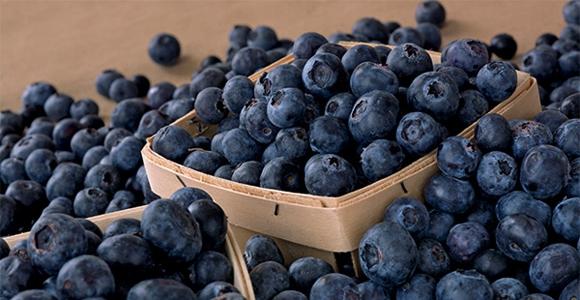Phomopsis twig blight, caused by the fungus Phomopsis spp. (including P. vaccinii), can be a serious disease if allowed to buildup in a blueberry planting. This disease is frequently more severe following winters characterized by excessive temperature fluctuations and associated injuries. The fungus overwinters in cankers or dead twigs and produces spores in the spring, primarily during bloom. Rain is necessary for spore release and warm temperatures are favorable for infection. Symptoms first appear on smaller twigs but the disease can spread into larger branches and may even infect the crown. Younger tissues often do not show any symptoms at first, but may suddenly wilt and collapse in summer. The pith and wood of these infected twigs become discolored. Since bushes which are weakened or predisposed by winter injury or are in poor vigor are vulnerable to attack by this fungus, measures to maintain optimum plant growth and vigor help to minimize the effects of this disease. In addition, all blighted or discolored wood should be pruned and removed from the vicinity of the planting during the dormant season or whenever newly infected tips appear. Some of the cultivars that appear to have some resistance are Bluejay, Jersey, Bluetta, and Darrow. Fungicide sprays during the growing season can provide some control. Additional sprays of lime sulfur, applied in late fall (after leaves drop) or as dormant, spring applications have been reported to reduce available inoculum. Pruning is still the key management tool.
